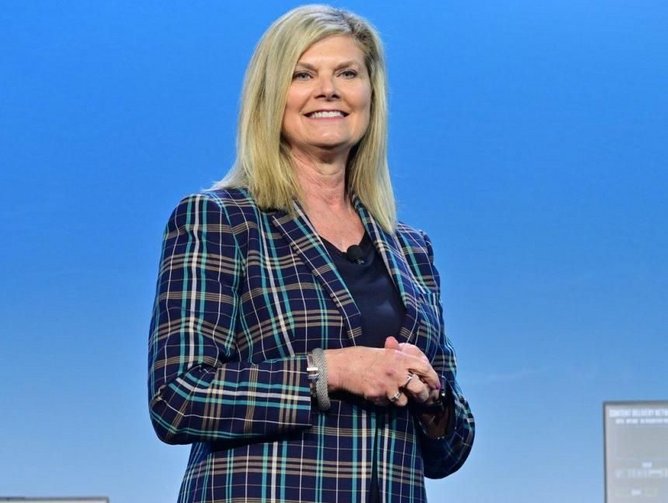Intel: Helping enterprises realize the power of digital transformation
Ubiquitous digital transformation and mass migration towards the cloud has become the new reality for the world’s corporations, governments, and educational institutions. As data increasingly becomes the fuel powering the global economy, new methodologies, technologies and philosophies need to be developed in order to remain marketable –even the industry’s largest players are changing their playbooks. Intel, with over half a century at the forefront of semiconductor innovation, has been a catalyst for some of the most significant technology transformations in modern history, helping reinvent the way we work and play and thrive in the digital era.
Today, Intel is both helping its diverse ecosystem of customers and partners harness the power of the digital transformation, while simultaneously undergoing its own transformative shift in its business focus. “It’s a data-centric world, and Intel as an organization is transitioning to harness the value that this data provides,” explains Lisa Davis, Vice President and General Manager of Digital Transformation & Scale Solutions at Intel. “We fully recognize the importance of being data-centric has on our business and our customers. Leveraging the latest technologies that help to move, store and process data allows us to serve our customers’ needs better.”
Unlocking the power of Big Data is, Davis recognizes, the primary driver of Intel and its customers’ digital transformation. In the modern world, a successful digital transformation is the difference between commercial viability and being consigned to the Wikipedia footnotes of history. “It is extremely difficult to compete in today’s market using the technologies of yesterday,” says Davis. “Your company's ability to keep pace with the competition by leveraging technology to provide the services, capabilities and experiences your customers expect today is paramount. The companies that don't do that aren’t likely to survive.” We sat down with Davis to discuss her insights, gained from a career in technology spanning more than three decades in the public and private sectors, into the need for ongoing digital transformations that are holistic, guided by corporate strategy and ultimately driven by customer demand.
Davis’ journey in the public sector began as a senior in high school, spending her summers throughout college working in a Junior Fellowship Program at the Lakehurst Naval Air Engineering Center. “They were trying to recruit engineers to come to work for the US Government,” she recalls. “I spent 26 years, after graduating from Syracuse, working for the US Department of Defense. I think I may be one of the few people who started as a high school senior, as a GS2 – the very bottom of the pay scale – and retired as a Senior Executive Service Member, which is equivalent to a US Admiral or General.” Throughout her career with the DoD, Davis held almost every job in the IT organization, rising from a computer programmer, to managing help desks services, to managing infrastructure systems, to running mission control systems, to being a Deputy CIO and eventually CIO for the Counterintelligence Field Activity in DOD, and then for the US Marshals Service at the Department of Justice.
In 2012, Davis made the decision to leave the public sector and move to academia, where she became CIO of Georgetown University. “I was intrigued by the mission, which was to take an institution created in 1789 and continue to make it digitally relevant for the students of today,” Davis recalls. Guiding digital transformations was something Davis has specialized in during her time in government, and soon brought the concept of seamless internet connectivity to the Georgetown campus. She served at the college for a further three years before making the move to Intel, taking on her current role two years later running the Digital Transformation and Scale Solutions business, for Enterprise and Government customers in the Data Center Group at Intel. “What I love about this role is that it allows me, having been a customer for the majority of my career as a CIO, to now be in a position to influence the product roadmap and build solutions with Intel's diverse ecosystem of partners that help our enterprise customers on their digital transformation journey,” enthuses Davis.
Having run the gamut of public and private sector digital transformation roles, Davis recognizes that, while there are differences between the “different flavors of government”, academia and the private sector – like speed of adoption, budget constraints and organizational structure – every transformation can be distilled to a few core truths. Firstly: “Digital transformation is ultimately about the experiences we create for our customers, whether those customers are the men and women of the US Marshals Service, or the students, faculty and administration of Georgetown University.”
Unlocking the power of digital transformation is, in Davis’ mind, essential to providing Intel and its partners’ customers with the experiences they need. “I manage the global business for hybrid multi-cloud, artificial intelligence, enterprise analytics and cyber security solutions. We’re largely driven by figuring out how we help our customers move from legacy technology environments to leveraging cloud technologies. It’s about right workload in the right place for the right business requirements,” says Davis. “Today, our customers are managing IT environments that are more complex than ever as they manage distributed environments that consist of workloads or applications sitting on-prem and in private clouds, sitting out at public clouds, and now on the intelligent edge and with many different public cloud providers.”
The complexity and increasingly interconnected nature of enterprise software and the businesses that software supports is at the heart of Davis’ second core truth: “Digital transformation strategy needs to be holistic, because it's not just about the technology,” she insists. “One of the first things I ask our customers is what their corporate strategy is. Technology should be leveraged to help drive the overall corporate or government strategy of the company. Corporate strategy and technology need to be connected. Today, every company is a technology company.”
In a landscape where technological innovations move from the theoretical to the commonplace at head-spinning speeds, it is a common mistake for companies to latch onto every new development, implement it quickly, and then try to figure out the business case later. “Don't digitally transform for the sake of technology,” warns Davis. “I digitally transform businesses to help them compete and remain marketable. When we talk about transformation, it's about a connection to your corporate strategy. It's also about a data strategy because ultimately I want to modernize and help transform so I can leverage the data within my company to drive insights for the business.”
One new Intel technology that’s playing a key role in harnessing increased amounts of data for more rapid insights is Intel Optane DC Persistent Memory. In development for the past 10 years, Intel Optane DC Persistent Memory represents a re-architecting of the memory storage hierarchy. “We've created a new memory pool that is non-volatile, unlike RAM, and delivers more capacity and better TCO,” explains Davis. “A great use case for Optane is in in-memory databases like SAP Hana. SAP has been a key innovative partner in leveraging this new technology, which allows us to put large amounts of data in memory, next to the CPU, to solve the toughest business problems for the company. That's the power of this new technology.” Ultimately, the product will help Intel and its customers navigate the exponentially growing ocean of data covering the world, and draw insights that will drive customer satisfaction and help determine where the next stage of digital transformation leads.
“I remember sitting in budget committees where people would ask me when the ‘digital transformation thing’ was going to be over,” Davis laughs. “Digital transformation, certainly in today's market, doesn't have a start and an end. If you continue to evolve and try to keep pace with the technology, transformation will always happen.” Much as it took on a pivotal role in the democratization and mass distribution of the microchip over the last 50 years, Intel is positioning itself to be at the heart of a new reality, constantly shaped and reshaped by digital transformation. Davis is confident that, going forward, she will be able to help Intel, its partners and, most importantly, the end customer, be prepared to meet the future. “Intel is continuing to make investments and will continue to lead innovation to support our customers and partners. Certainly, in the areas of hybrid cloud, artificial intelligence, enterprise analytics, cybersecurity and even quantum computing, Intel is about being at the forefront of providing the end-to-end solutions that we can build with our ecosystem of partners to help all of our customers on their digital transformation journeys.”





